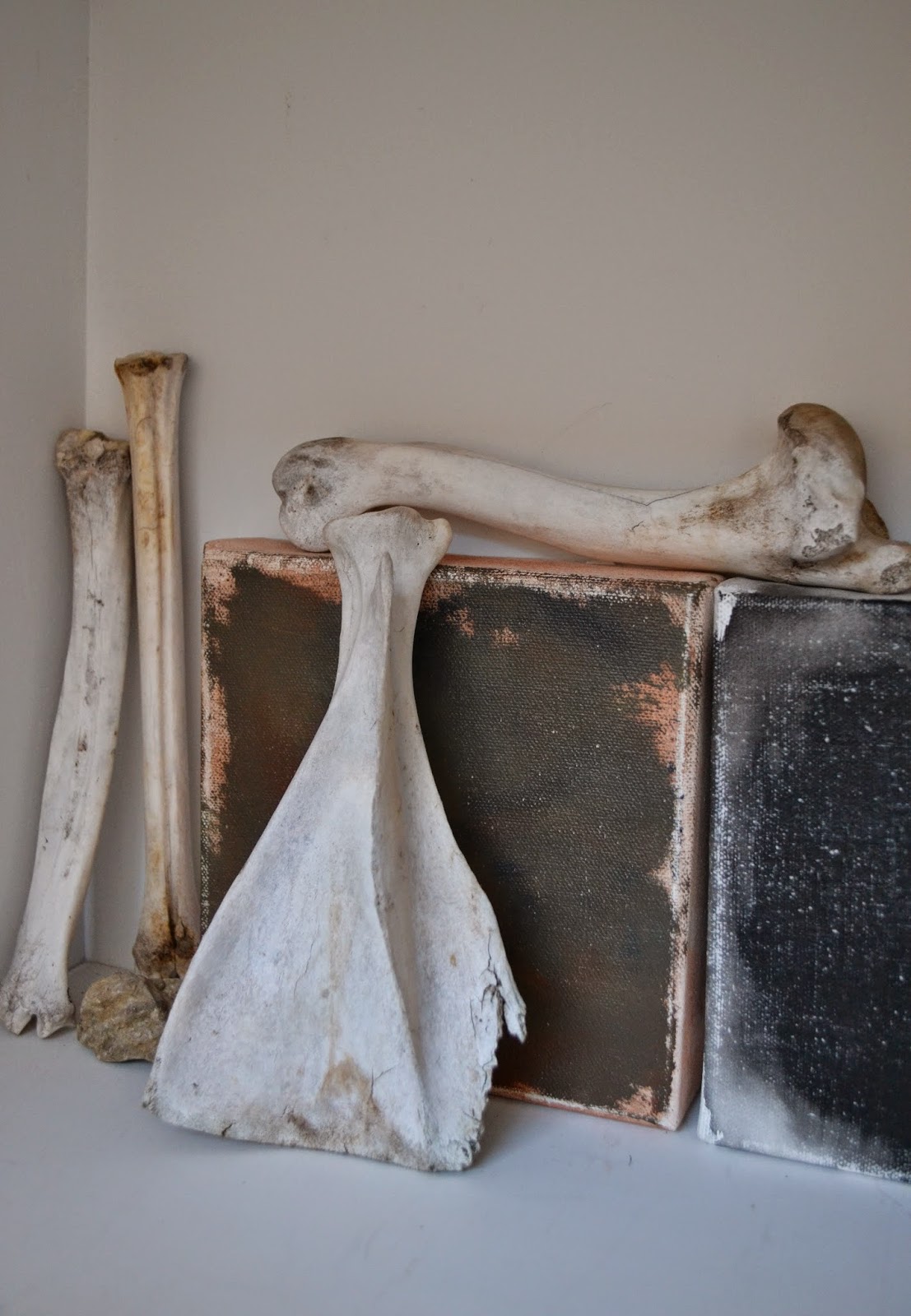Stuff is beginning to happen in the studio. I'm not exactly sure what that stuff is but it's emerging. I went to the FW Museum of Science and History's off-view animal specimen collection and took heaps of reference photos. I went with a list in hand of all the birds mentioned in Shakespeare's plays. Of the 52 listed I found 27 of the birds. Most were skins but there were several really nice mounted taxidermy specimens. Here are some of my favorite photos from the visit (some of which have nothing to do with Shakespeare) as well as the work that is coming from the experience...
oil on birch, 12"x15"
I'm realizing that the space around the panel is just as important as the panel itself.
Above is a 4ft.x4ft. wood panel and below is a 5ft.x6ft. canvas tacked to the wall.
On a side note I present to you - meteorites. There just so happens to be a small meteorite museum on campus. I went there and it was awesome. What I loved most (besides the fact that these objects were once orbiting around in freaking outer space) was seeing these otherworldly masses displayed in front of earthly, familiar photographed landscapes.
I brought that idea in closer by having a very foreign meteorite inhabiting a very personal and recognizable space…home.
oil on cardboard, 8"x10"




















